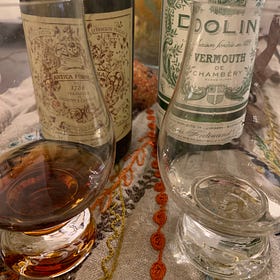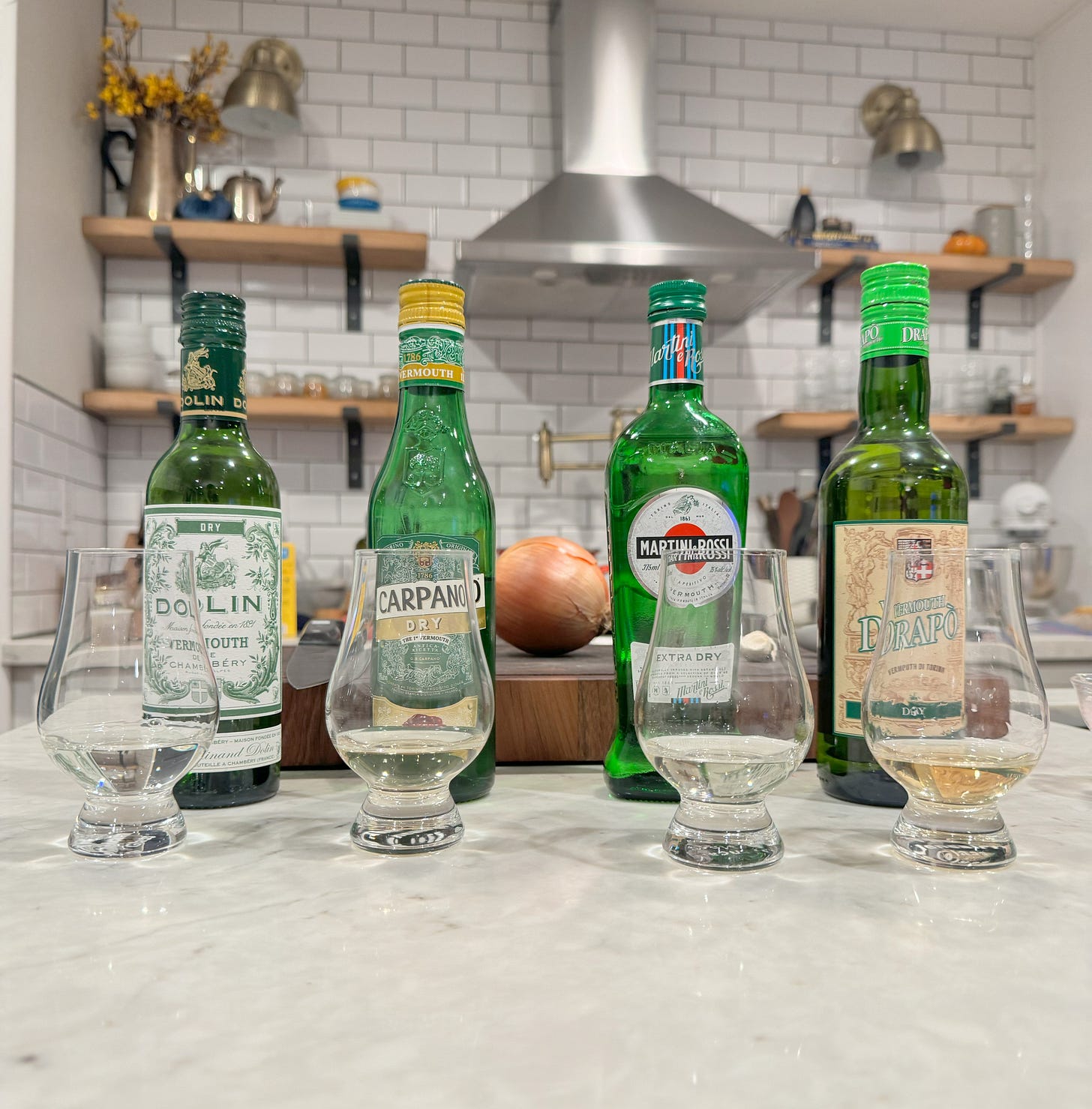A Quick Exploration of Small-Format Dry Vermouths
If a martini is really just gin and dry vermouth, then it's best to understand that second ingredient well
Depending on the proof, you’ll have anywhere between a half ounce to a full ounce of dry vermouth in your martini. That doesn’t sound like a lot, but I promise your selection has a massive impact on the cocktail.
I’ve focused on dry vermouths widely available in half-bottles here since you won’t be using much at a time. Smaller bottles are easier to store in the fridge and less likely to oxidize, so I recommend them even though it’s not the most “bang for your buck” purchase option.
A Brief Dry Vermouth Primer
I’ve written about dry vermouth a decent amount. In fact, one of the first things I ever wrote on MI was a vermouth deep-dive (more than 5 years ago?!?):
Vermouth: Under-Appreciated Cocktail Fundamental
Vermouth gets a bad rap. It seems like most people, and a good number of bars, keep it around as a necessary evil. If it's in your kitchen, it's most likely there for cooking and it's been open for months on the counter. This is a travesty. Vermouth is amazing and deserves some more respect.
What I wrote then still holds, though it was a bit dry (pun unintentional, promise)…
Usually, but not always, French in origin and probably what you think of when you think "vermouth" if you cook a lot of French food or love a martini. Sugar content is under 4%.
The nose is clean, like a dry white wine with sharper citrus notes. The palate is sour, almost vinegary, but the finish opens up to reveal the spices and quinine. Dolin owns this category for good reason and is available pretty much everywhere.
I think I’ve used enough other quinine-heavy ingredients now that I don’t get the quinine anymore, but technically it’s usually there. These days, I get more herb character on the palate than spice. 5 years of this will change a palate, apparently.
That’s enough of an overview - let’s dive a bit deeper into each of the 4 bottles in the potential lineup for my house martini.
Dolin
It still owns the category, and it’s still good. It’s half a percent lower-proof than the category standard (17.5% vs 18%) which I find interesting if nothing else. It’s a very bright vermouth that drinks super-clean to the point that its almost sour. There’s a lot of citrus zest here, but not much herb. The brand says you should get menthol and balsamic but I do not. I do get almond on the nose, though, which makes me worry guests will suspect nefarious intentions if I have too much of it around.
Carpano
The brand is synonymous with vermouth, just not this one. Antica Formula is a tour de force of Italian sweet vermouth, but this dry expression earns its place in the portfolio. It’s a deep vermouth that drinks almost syrupy to me (not that there’s a ton of sugar, it’s just heavy). The nose here is amazing, full of citrus flower and herb. Those herbs come through on the palate, and the profile is very full. It’s not necessarily clean like you expect, but it’s tasty.
Martini & Rossi
By all accounts unchanged since the turn of the last century (or one before that? what do we call 1900 in 2023?), it’s kind of amazing that you can pick this up for less than $10 at pretty much any place that sells booze. The brand highlights the inclusion of raspberry extract, but if you can pick that up you’ve a much more discerning palate than this cocktail blogger. I get a bracing dryness right up front, to the point that drank straight it almost tastes “off.” The intense roots used in the aging provide a kind of bitter sourness that makes this tough to drink on its own, though in some ways it almost works as an independent cocktail over ice for that same reason.
Drapo
The only brand here not to have translated their site to English, it also to me drinks the “oldest” in that you could easily convince me that this aged in wood before bottling. That’s partially because it looks darkest with a pure golden straw hue that I love. The brand says you should taste tropical fruit, and I find that to be true. I also get a ton of lemon throughout, and a good deal of wood on the nose.
The Verdict(?)
The question mark is because I don’t think this matters. The standalone flavor of each of these has little bearing into how the play in a martini. Drinking dry vermouth on the rocks isn’t really a thing, so who really cares how it tastes on its own? I think it’s important to know what flavors are there and the general profile, but still - just because the ingredient might be cyanide doesn’t mean it gives that to the martini…
But, if I had to choose which of these would be the best impendent drink, I’d go with Drapo. Let’s see if it makes it into my house recipe.



